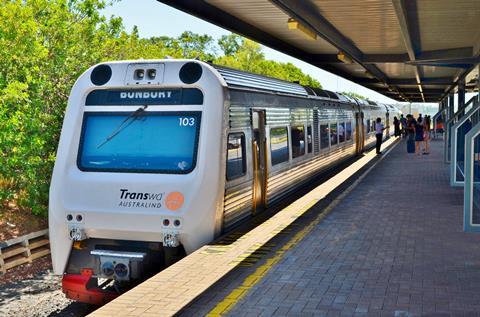
AUSTRALIA: Work has started on the development of a strategic business case for a ‘Fast Rail’ link between Perth and Bunbury.
Intended to inform Western Australia’s state infrastructure study, the SBC will support future decision-making on connectivity and land use in the state’s southwest region. The state government is working with the National Faster Rail Agency, and expects to complete the A$8m study by mid-2023. It will look at possible alignments and station locations, before assessing the viability, benefits and costs of the preferred option.
Funding is being provided by the state and federal governments. Announcing an initial contribution of A$3·4m in December 2020, WA Transport Minister Rita Saffioti explained that ‘this is planning for the future and I anticipate a lot of the work will focus on the best corridor’.
Bunbury is currently linked to the state capital by the twice-daily Australind, which takes around 2½ h to cover the 175 km, including 11 intermediate stops. To replace the ageing DMUs which operate the service, the state government has ordered two three-car sets from Alstom alongside the new fleet of suburban EMUs for Perth.
Various options have been proposed for reducing the end-to-end journey time to around 90 min. A 2008 plan envisaged a southern extension of the Mandurah suburban line along the median of the Kwinana Freeway, with trains running at 160 km/h. Studies were then undertaken in 2010 for a 250 km/h high speed line to Bunbury. The current scheme favours the development of a 180 km/h alignment following the Forrest Highway corridor.
Welcoming the start of work, Australasian Railway Association CEO Caroline Wilkie emphasised that greater use of rail would be an essential part of the country’s sustainable future. ‘Faster rail networks will be crucial to connecting our cities with growing regional centres’, she said, adding that ‘immediate investment in existing networks to improve the speed, reliability and frequency of rail services’ was the first step in encouraging modal shift.
Proposals have reportedly been submitted for expanding the rapid rail concept to a wider network stretching from Geraldton to Esperance, citing forecast population growth in the state’s mid and southwestern regions. Local governments are also calling for the reinstatement of passenger services between Perth and Albany, which were withdrawn in 1978, leaving the route used only by freight.

















